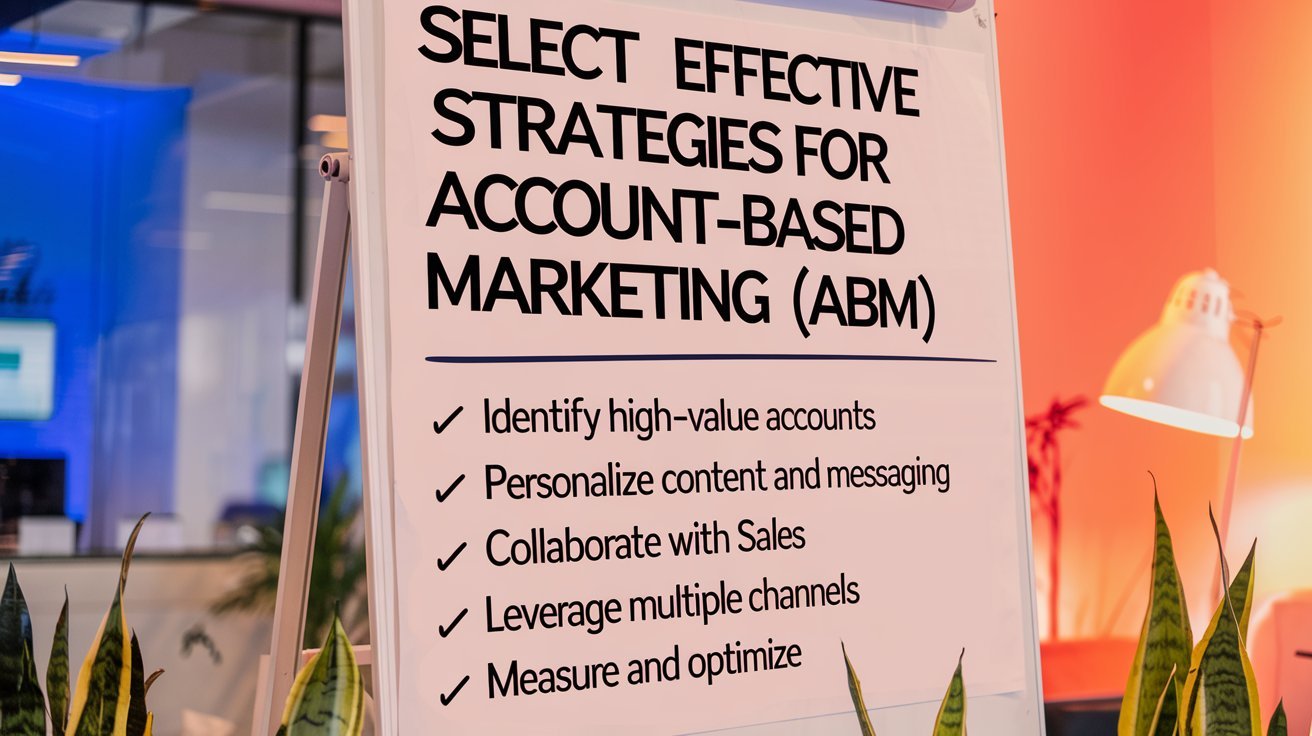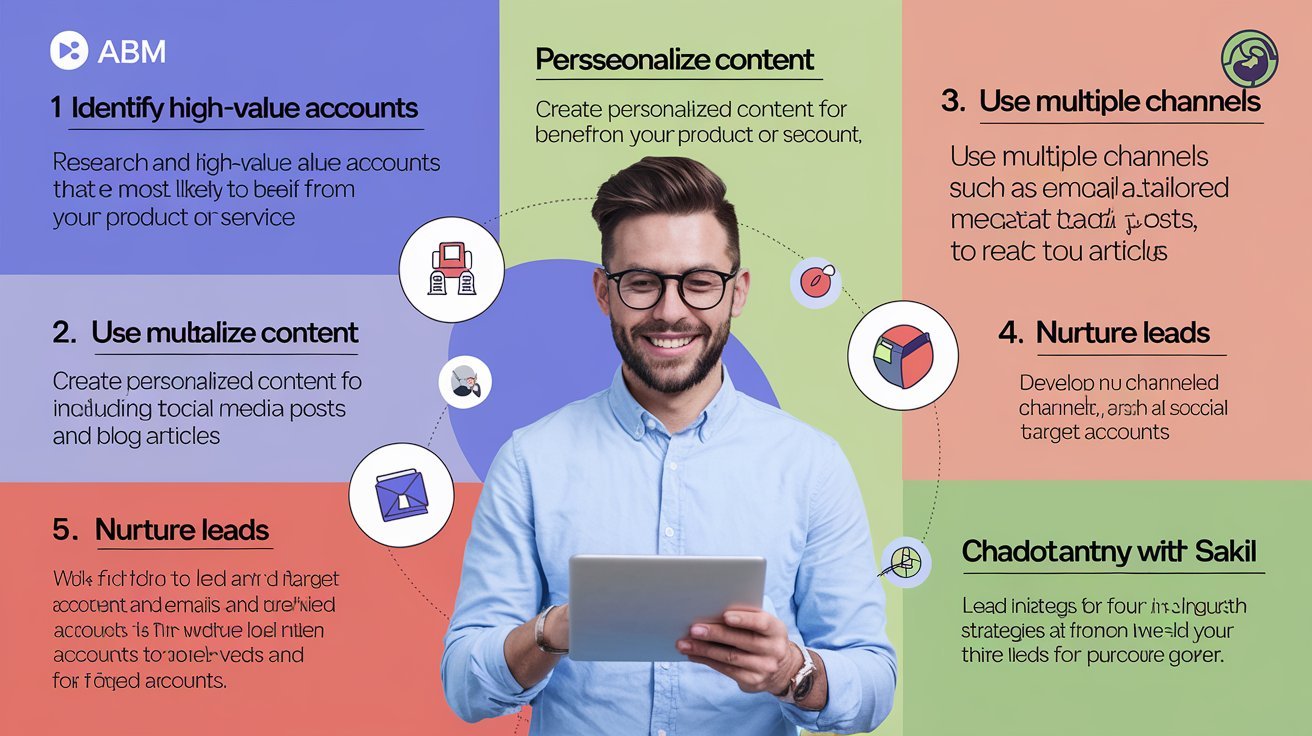Account-Based Marketing (ABM) has emerged as a powerful strategy for B2B companies looking to target high-value accounts with precision and personalization. Unlike traditional marketing approaches that cast a wide net, ABM focuses on engaging a specific set of target accounts with tailored messages and tactics. This blog will explore effective strategies for implementing ABM to drive meaningful engagement and deliver measurable results.
Define Your Ideal Customer Profile (ICP)
The foundation of a successful ABM strategy begins with a well-defined Ideal Customer Profile (ICP). Your ICP should include:
- Firmographic Data: Industry, company size, revenue, and location.
- Behavioral Data: Purchase history, buying signals, and engagement patterns.
- Technographic Data: Technology stack and software preferences.
- Pain Points and Needs: Challenges your product or service can solve.
Action Step: Collaborate with sales, marketing, and customer success teams to create a comprehensive ICP. Use data from your CRM and market research to refine your profile.
"These cases are perfectly simple and easy to distinguish. In a free hour, when our power of choice is untrammeled and when nothing prevents our being able to do what we like best, every pleasure is to be welcomed and every.!"
Cherry Cruuz

2. Identify and Segment Target Accounts
Once you have a clear ICP, identify and segment target accounts that match this profile. Prioritize accounts based on their potential value and strategic importance. Consider factors such as:
- Account Fit: How well the account aligns with your ICP.
- Engagement Potential: The likelihood of the account engaging with your marketing efforts.
- Decision-Making Authority: Access to key decision-makers and influencers.
Action Step: Use tools like LinkedIn Sales Navigator or intent data platforms to find and prioritize target accounts.
3. Personalize Your Messaging and Content
Personalization is at the heart of ABM. Develop customized content and messaging for each target account, addressing their specific needs and pain points. This can include:
- Customized Emails: Tailor subject lines, content, and offers to the account’s unique challenges.
- Personalized Landing Pages: Create dedicated landing pages with content relevant to the target account.
- Account-Specific Content: Develop case studies, whitepapers, and infographics that resonate with the account’s industry and needs.
Action Step: Leverage marketing automation tools to deliver personalized content and track engagement metrics.
5. Implement Multi-Channel Engagement
Engage target accounts through a multi-channel approach to maximize your reach and impact. Channels to consider include:
- Email Campaigns: Use personalized emails to nurture leads and drive engagement.
- Social Media: Leverage platforms like LinkedIn to share tailored content and interact with key stakeholders.
- Events and Webinars: Host exclusive events and webinars tailored to the interests and needs of your target accounts.
- Direct Mail: Send personalized gifts or offers to stand out and make a memorable impression.
Action Step: Develop a channel strategy that aligns with the preferences and behaviors of your target accounts.
6. Measure and Optimize Your ABM Campaigns
Continuous measurement and optimization are crucial for ABM success. Track the performance of your campaigns using metrics such as:
- Account Engagement: Monitor interactions, content views, and response rates.
- Pipeline and Revenue Impact: Assess how ABM efforts are influencing the sales pipeline and revenue generation.
- ROI: Calculate the return on investment for your ABM initiatives to determine their effectiveness.
Action Step: Use analytics tools to gather data, analyze performance, and adjust strategies based on insights.
7. Build Strong Relationships and Provide Value
ABM is not just about closing deals; it’s about building long-term relationships with key accounts. Focus on providing value through:
- Educational Content: Share insights, industry trends, and best practices relevant to the account’s interests.
- Dedicated Support: Offer personalized support and consultation to address specific needs and challenges.
- Regular Check-Ins: Maintain ongoing communication to stay top-of-mind and demonstrate commitment.
Action Step: Develop a relationship management plan to ensure continuous engagement and value delivery.

- Focused efforts on high-value accounts often lead to higher conversion rates.
- Tailored content and messaging improve engagement and relevance.
- Greater collaboration between sales and marketing teams ensures more effective strategies.
- Targeted approach results in more qualified leads and better account management.

